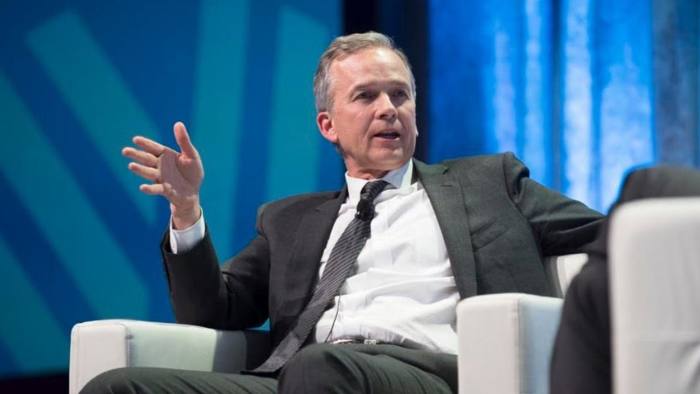Bridgewater warns Federal Reserve
October 15, 2018 | Expert Insights

Bob Prince, the co-Chief investment officer of the world’s largest hedge fund expects more market turbulence as the US economy begins to cool.
Background
The United States is the largest economy in the world in terms of nominal GDP. The U.S. GDP was estimated to be $18.46 trillion in 2016. The U.S. dollar is the currency most used in international transactions and is the world's foremost reserve currency.
The International Monetary Fund stated in July that the US economic growth will be 2.1%. It downgraded the nation’s growth rate from 2.5%. However, the US administration headed by President Donald Trump has maintained that the growth rate would be 3% in 2018. The US hopes to give a boost to its economy through expected tax cuts and federal spending. The IMF had ruled that the US’ projection was unlikely as the labour market is already at a level consistent with full employment. It also critiqued the US administration’s ever-evolving policy plans as a source of uncertainty.
The US stock market has enjoyed a bull market since 2009. For the first time since 2007, the market closed above 14,000 in February 2013. The market has been rising since the US presidential elections. In August 2017, For the first time in its 121-year history, Dow Jones Industrial Average broke the 22,000 barriers.
Analysis
The US economy faces a looming deceleration as tighter monetary policy starts to weigh on activity and ratchets up pressure on financial markets, according to the world’s biggest hedge fund
Bob Prince, co-chief investment officer at Bridgewater, believes the recent market turmoil was triggered by investors realising that this year’s strong economic growth and robust corporate earnings were likely peaking, as interest rates rise and the boost from tax cuts fades.
“A lot of optimism about future earnings growth has been baked into equity valuations. But we are at a potential inflection point where the economy is moving from hot to mediocre,” Mr Prince said in an interview.
Mr Prince, who manages Bridgewater’s $160bn of assets alongside founder Ray Dalio and co-CIO Greg Jensen, said: “We are now approaching the stage where monetary tightening could produce, perhaps not a big downturn, but more pressure.”
Treasury yields started climbing sharply earlier this month, as a string of healthy US economic data and hawkish comments by Federal Reserve officials forced investors to reassess their confident view of how far and how fast the central bank would be able to raise interest rates.
Although the bond market reversal was triggered by the good economic news, the jump in Treasury yields was so abrupt that it spilled over into the US stock market, sending the S&P 500 tumbling by the most in more than half a year — a drop so severe it reverberated across global markets.
Tax cuts have invigorated the US economy this year, pushing the jobless rate to its lowest since 1969, consumer confidence to its highest since 2000, and service sector activity to its greatest since 1997. Even the Fed now predicts that growth will surpass 3 per cent in 2018.
The growth rate has led the Federal Reserve to predict in a fourth rate increase for the year in December, and another three in 2019, to cool the economy. At the same time, the Fed is shrinking its balance sheet of bonds acquired in the crisis.
President Donald Trump last week voiced his concerns about rising interest rates, saying the Fed was “out of control” and describing its current policies as “crazy”.
Counterpoint
With rates now expected to rise sooner than previously thought, growth forecasts for next year are more muted, and some analysts are even predicting another downturn by 2019 or 2020. Mr Prince said that the dangers were mitigated by the financial system’s improved resilience, but has voiced concerns about the implications of more limited monetary and fiscal firepower.
Swelling budget deficits limited to the US government’s flexibility to stimulate the economy, and the Fed’s interest rates remain low. At the same time, the political resistance to a new dose of quantitative easing is likely to be severe.
Assessment
Our assessment is that the US economy is showing signs of slowing down largely due to the ongoing trade war, which is affecting US companies’ offshore manufacturing facilities in mainland China. The market turbulence could be attributed to the volatile nature of the oil market in the past few weeks, coupled with the simmering political conflicts in the Middle East. We believe that the Federal Interest Rate hikes will be reviewed before the US economy starts to cool down earlier than expected. We also feel that the US Mid-Term elections in November will be influential on the next set of tax relief measures.








Comments